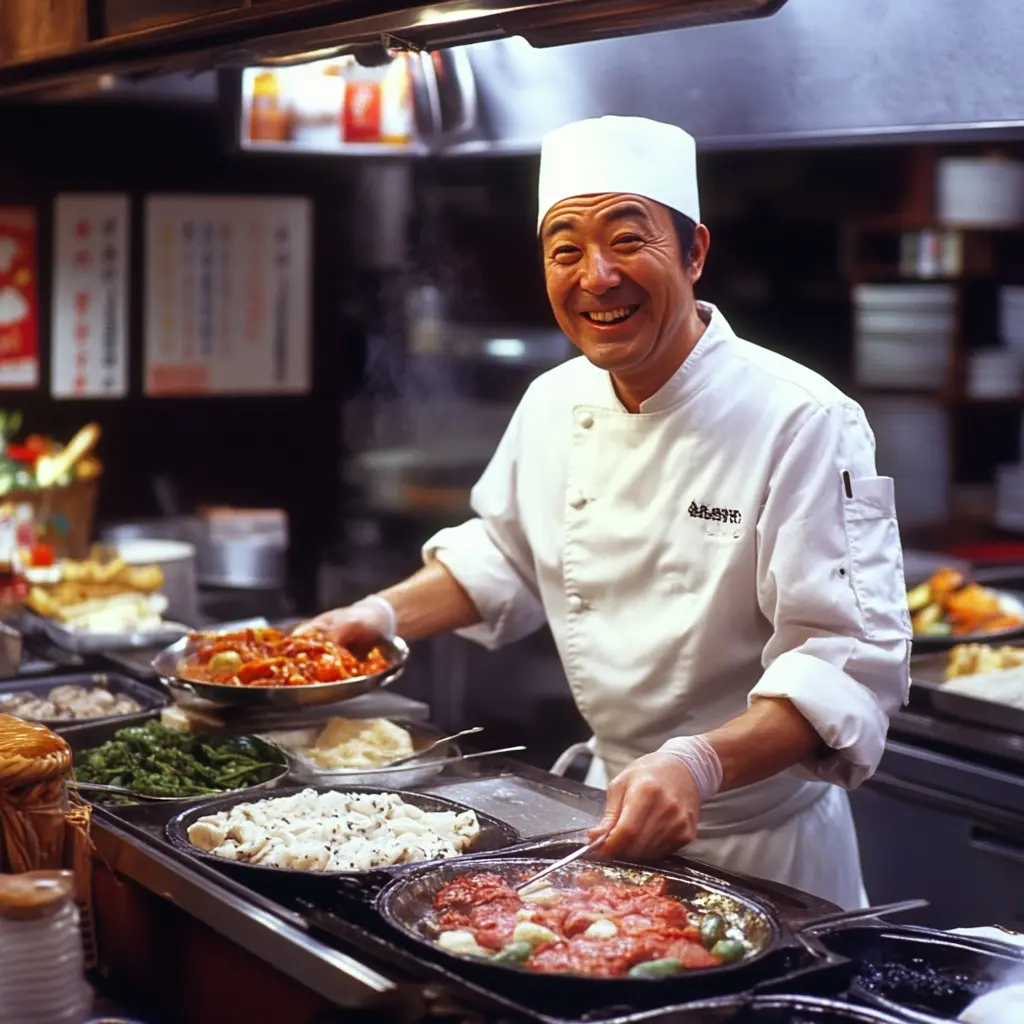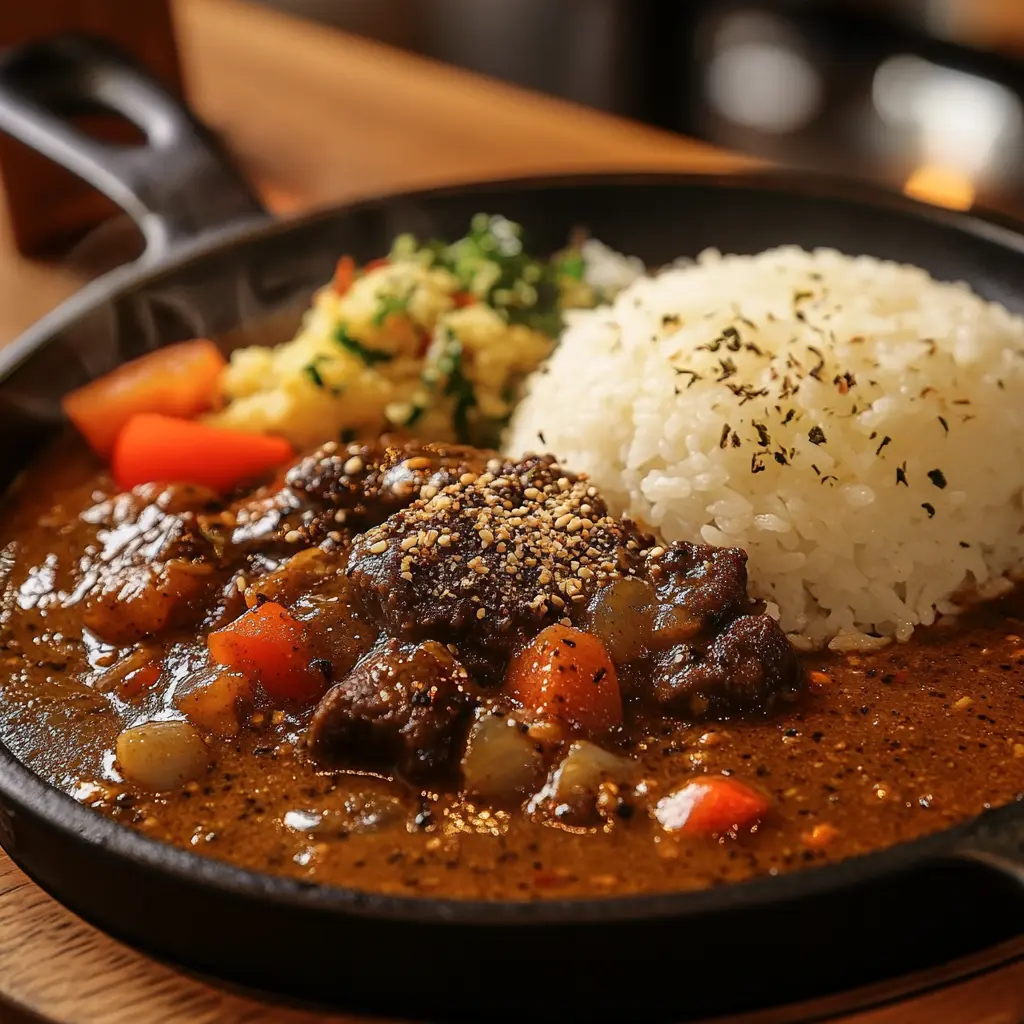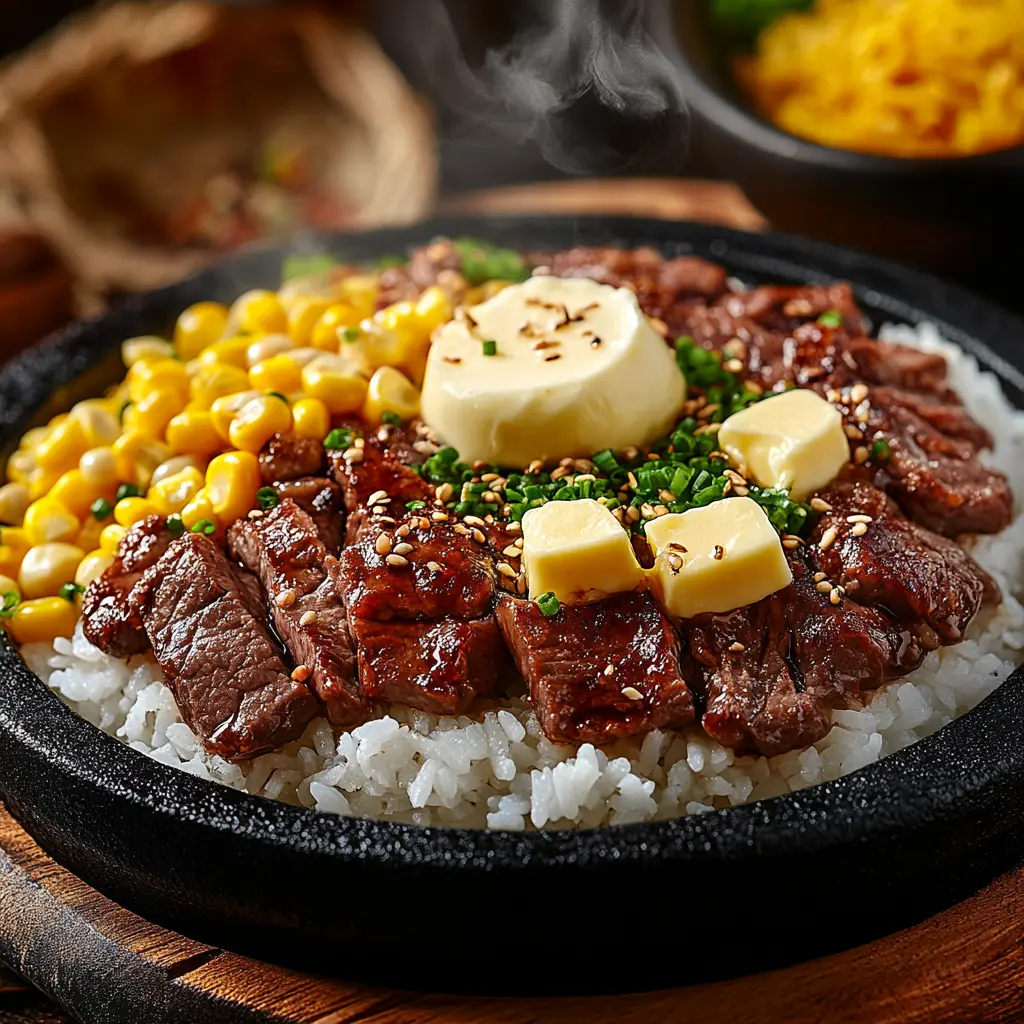Introduction
Pepper Lunch is a sizzling sensation, known for its hot iron plate meals that deliver an interactive and delightful dining experience. But when it comes to its roots, the question often arises: Is Pepper Lunch Japanese or Korean? This article takes a deep dive into the history, culinary influences, and cultural significance of Pepper Lunch, shedding light on its origins and exploring how it has gained fame worldwide.
Part 1: Understanding the Origin of Pepper Lunch
The Birth of a Culinary Icon
Pepper Lunch, founded in Japan in 1994, quickly became a hallmark of the fast-casual dining scene. Chef Kunio Ichinose envisioned a restaurant where diners could enjoy high-quality steak dishes at affordable prices. With its unique teppanyaki-inspired cooking method and customizable menu, it offered something both exciting and approachable.
The restaurant’s signature iron plate is a defining feature, ensuring every dish is served hot and retains its flavors. This innovation isn’t just a cooking method—it’s an experience that resonates with food lovers globally.
The Significance of Its National Identity
So, why does it matter whether Pepper Lunch is Japanese or Korean? For one, understanding the brand’s identity helps preserve its authenticity. It also reflects the broader cultural influence of Japanese cuisine and its expansion into international markets. While Korean adaptations of Japanese dishes are not uncommon, identifying the roots of Pepper Lunch adds context to its success story.
Part 2: Historical Background
The Founding of Pepper Lunch
Pepper Lunch was born out of innovation and practicality in 1994, the brainchild of Japanese chef Kunio Ichinose. At the heart of Ichinose’s idea was a simple yet revolutionary goal: to create a dining experience where customers could cook their own meals on a hot iron plate. This concept offered a blend of teppanyaki-style cooking with a fast-casual twist, making high-quality steak and other sizzling dishes accessible to all.
In Tokyo, where the brand first launched, it quickly gained popularity. The vibrant streets of Japan’s capital city welcomed this modern culinary concept with open arms. The self-cooking iron plate wasn’t just functional; it turned dining into an interactive experience. This novelty, paired with mouthwatering flavors, set the stage for its rapid success.
What truly distinguished Pepper Lunch was its affordability. While teppanyaki meals are often associated with upscale dining, Pepper Lunch made it possible for anyone to enjoy the rich, savory taste of sizzling beef, chicken, and seafood without breaking the bank.

Expansion Into Korea
As Pepper Lunch thrived in Japan, the brand began looking beyond its borders, eventually expanding into neighboring South Korea. The decision to enter the Korean market wasn’t just strategic—it was inspired. Korean diners had already shown an affinity for bold flavors, interactive meals, and a love for hot, hearty dishes.
By the early 2000s, Pepper Lunch had firmly established itself in South Korea. However, the menu underwent some subtle changes to cater to local preferences. For example, spicier sauces and kimchi-inspired sides were introduced to appeal to the Korean palate. While the heart of the menu remained true to its Japanese roots, these adaptations ensured that the brand resonated with its new audience.
This duality—remaining authentic while embracing local flavors—played a crucial role in Pepper Lunch’s success. It wasn’t just seen as a Japanese export; in Korea, it became a beloved culinary gem that blended the best of both cultures.
Evolution of the Menu
Japanese Culinary Influences
From its inception, Pepper Lunch was deeply rooted in Japanese culinary traditions. The iron plate, or teppan, is a cornerstone of Japanese teppanyaki cooking. This method focuses on preserving the natural flavors of the ingredients while adding a rich, smoky aroma.
Signature dishes like the Beef Pepper Rice highlight this influence. This dish combines tender slices of beef, rice, and a medley of vegetables, all sizzling on a hot plate. A pat of butter and freshly cracked black pepper elevate the flavor, showcasing the simplicity and precision that Japanese cuisine is celebrated for.
The brand also drew inspiration from Japan’s obsession with umami—the savory taste that defines many traditional dishes. By incorporating ingredients like soy sauce, garlic, and miso-based seasonings, Pepper Lunch’s menu exuded a distinctly Japanese flair.
Adaptations for Korean Tastes
When Pepper Lunch crossed the sea to South Korea, it didn’t arrive as a carbon copy of its Japanese counterpart. Instead, it embraced the local food culture while maintaining its original charm.
Korean diners, known for their love of spicy and bold flavors, welcomed additions like gochujang-based sauces and marinated beef options. The menu also included seasonal items inspired by popular Korean dishes, such as bulgogi-style rice bowls. These modifications made Pepper Lunch more appealing to a Korean audience without losing its core identity.
Interestingly, this approach mirrors how Japanese cuisine has been received globally. While the foundation remains consistent, small changes ensure the food aligns with local preferences. This adaptability has been a key driver of the brand’s success in Korea and beyond.
What Sets Pepper Lunch Apart?
Despite its adaptations, one thing remains constant: the sizzling iron plate. This signature element encapsulates the essence of Pepper Lunch—fresh ingredients, cooked to perfection, with flavors that the diner controls.
In both Japan and Korea, the concept of an interactive meal resonates deeply. While in Japan, it reflects the country’s precision and attention to detail, in Korea, it aligns with the communal dining culture, where meals are a shared experience. This shared appreciation underscores the universal appeal of Pepper Lunch’s dining concept..
Part 3: Culinary Analysis
Signature Dishes and Their Origins
One of the most fascinating aspects of Pepper Lunch is its diverse yet cohesive menu, which artfully combines Japanese culinary traditions with universal appeal. At its core are signature dishes like Beef Pepper Rice, Curry Pepper Rice, and Chicken Teriyaki, each showcasing the brand’s teppanyaki roots.

Beef Pepper Rice: A Quintessential Dish
Beef Pepper Rice is perhaps the most iconic dish on the menu, representing everything Pepper Lunch stands for: simplicity, flavor, and interactivity. Thinly sliced beef, steamed rice, corn kernels, and freshly ground black pepper are carefully arranged on a sizzling iron plate. A dollop of butter sits on top, ready to melt into the dish as diners stir the ingredients together.
This dish embodies Japanese cuisine’s philosophy of enhancing natural flavors. The sizzling plate not only cooks the ingredients but also infuses them with a smoky aroma that elevates the dish’s taste profile. The concept is deeply rooted in teppanyaki cooking, where the teppan grill is used to cook fresh ingredients quickly while preserving their essence.
Curry Pepper Rice: A Fusion Favorite
Pepper Lunch also pays homage to Japan’s love for curry with its Curry Pepper Rice. While Japanese curry is milder and sweeter than its Indian or Thai counterparts, the addition of spices gives this dish a subtle warmth that balances perfectly with the sizzling rice and meat.
Interestingly, this dish resonates well with Korean diners, who also enjoy curries, albeit with spicier profiles. The harmonious fusion of flavors in the Curry Pepper Rice reflects Pepper Lunch’s ability to cater to diverse palates while staying true to its Japanese heritage.
Chicken Teriyaki: A Classic Reinvented
Chicken Teriyaki is another standout dish that highlights Pepper Lunch’s commitment to quality and authenticity. Teriyaki, a Japanese cooking technique involving soy sauce, mirin, and sugar, lends the chicken a glossy, flavorful coating that caramelizes beautifully on the hot iron plate.
For diners in Korea, where sweet and savory flavors are highly appreciated, this dish offers a familiar yet exciting taste. The addition of locally sourced vegetables further enhances its appeal, making it a perfect example of how Pepper Lunch bridges cultures through food.
Cooking Techniques That Define Pepper Lunch
The Role of the Iron Plate (Teppan)
Central to the Pepper Lunch experience is its signature iron plate. This teppan is preheated to an optimal temperature, ensuring that ingredients cook evenly while retaining their freshness. Unlike conventional teppanyaki grills, which are operated by chefs, the iron plate at Pepper Lunch puts the power in the hands of diners.
This interactive cooking style is not only entertaining but also allows diners to tailor their meal to their liking. Want your beef medium rare? Stir it less. Prefer crispy rice? Let it sizzle a bit longer. The teppan empowers customers to create a meal that suits their preferences, making dining at Pepper Lunch an enjoyable and personalized experience.
Sauces That Enhance the Experience
No meal at Pepper Lunch is complete without its signature sauces. From the savory Amakuchi sauce, which blends soy sauce with subtle sweetness, to the spicy Karakuchi sauce, every condiment is designed to complement the flavors of the sizzling dishes.
In Korea, an additional spicy gochujang-inspired sauce is available, reflecting the local love for bold, fiery flavors. These sauces not only elevate the taste of the dishes but also highlight how Pepper Lunch adapts its offerings to suit regional preferences without compromising its brand identity.
Unique Menu Variations in Japan and Korea
Japan’s Minimalist Approach
In Japan, Pepper Lunch menus are relatively minimalist, focusing on the essentials: rice, beef, chicken, and seafood. Seasonal specials, such as mushroom-infused rice bowls in autumn or grilled salmon in winter, emphasize the Japanese commitment to fresh, high-quality ingredients.
Additionally, the Japanese menu often features lighter sauces and more subtle flavors, catering to the local palate, which favors balance and harmony in taste.
Korea’s Bold Flavors
Korean branches of Pepper Lunch reflect the country’s penchant for bold, spicy flavors and hearty portions. Beyond the standard menu, you’ll find dishes featuring bulgogi beef, kimchi rice, and even cheese-infused options. These variations cater to the Korean love for rich, indulgent meals while staying true to the brand’s core concept.
The Korean menu also introduces side dishes such as pickled radish and spicy kimchi, which pair perfectly with the sizzling mains. These additions enhance the dining experience and make it uniquely Korean while retaining the essence of Pepper Lunch’s Japanese roots.
The Art of Balancing Cultures
What sets Pepper Lunch apart is its ability to seamlessly blend cultures through food. While its foundation is undeniably Japanese, the brand’s adaptability allows it to thrive in Korea and other international markets.
This balance is a testament to its culinary ingenuity. Whether you’re enjoying the classic Beef Pepper Rice in Japan or savoring a kimchi-infused variation in Korea, the essence of Pepper Lunch—fresh ingredients, sizzling plates, and flavorful sauces—remains intact.
Part 4: Cultural Impact
Reception in Japan and Korea
Japan: Where It All Began
In Japan, Pepper Lunch is celebrated as a trailblazer in the fast-casual dining world. Its teppanyaki-inspired concept is viewed as both innovative and practical, attracting a wide demographic ranging from busy professionals to families. Japanese diners appreciate the balance of high-quality ingredients and affordability, a hallmark of the brand’s philosophy.
Pepper Lunch outlets in Japan often emphasize a minimalist aesthetic, reflecting the country’s appreciation for simplicity and efficiency. Diners not only enjoy the delicious meals but also revel in the interactive experience of cooking their food just the way they like it.
Additionally, the brand’s commitment to using fresh, locally sourced ingredients resonates with Japanese sensibilities. This focus on quality has helped Pepper Lunch maintain its reputation as a modern yet authentic dining option, even in a highly competitive food market.
Korea: A Culinary Fusion Success
In Korea, Pepper Lunch has achieved significant popularity by blending its Japanese identity with Korean tastes. The brand’s sizzling dishes align well with Korea’s love for communal and interactive dining experiences, making it a perfect fit for the local culture.
Korean diners have embraced Pepper Lunch not just for its flavor but also for its adaptability. The addition of gochujang sauces, bulgogi beef, and kimchi-inspired sides has made the menu feel familiar yet exciting. This fusion approach has turned Pepper Lunch into more than just a Japanese import; it’s become a local favorite with a uniquely Korean twist.
Global Expansion and Cultural Perception
An International Phenomenon
Beyond Japan and Korea, Pepper Lunch has grown into a global brand with outlets in over 15 countries. Its universal appeal lies in the sizzling iron plate concept, which offers an interactive and flavorful dining experience that transcends cultural boundaries.
In regions like Southeast Asia, Australia, and North America, diners often associate Pepper Lunch with Japanese cuisine due to its teppanyaki roots and menu offerings. However, the brand’s ability to adapt to local tastes ensures its success in diverse markets.
A Symbol of Culinary Diplomacy
By blending Japanese tradition with Korean innovation, Pepper Lunch serves as a culinary bridge between the two nations. It highlights the shared love for bold flavors and interactive dining while respecting the unique characteristics of each culture.
FAQs About Pepper Lunch
Is Pepper Lunch Japanese or Korean?
Pepper Lunch is a Japanese brand, founded in Tokyo by chef Kunio Ichinose in 1994. While it has expanded internationally, including in Korea, its roots and culinary concepts are deeply tied to Japanese cuisine.
Who is the founder of Pepper Lunch?
The founder of Pepper Lunch is Kunio Ichinose, a Japanese chef and entrepreneur. His vision was to create an affordable, high-quality dining experience centered around self-cooked meals on a sizzling iron plate.
What makes Pepper Lunch different from other restaurants?
Pepper Lunch stands out because of its signature hot iron plate, which allows diners to cook their meals to their preferred doneness. This interactive dining experience, paired with fresh ingredients and flavorful sauces, creates a unique and memorable meal.
What are some signature dishes at Pepper Lunch?
Signature dishes include Beef Pepper Rice, Chicken Teriyaki, and Curry Pepper Rice. These dishes reflect the brand’s teppanyaki roots and its focus on delivering bold, savory flavors.
Conclusion
Pepper Lunch’s journey from a small Japanese restaurant to a global dining phenomenon is a testament to its innovation and cultural adaptability. While its origins are firmly rooted in Japan, the brand’s willingness to embrace local flavors, particularly in Korea, has cemented its reputation as a cross-cultural culinary success. Whether you savor the original Beef Pepper Rice in Tokyo or a kimchi-infused variation in Seoul, one thing remains clear: Pepper Lunch brings people together over sizzling plates of deliciousness.

